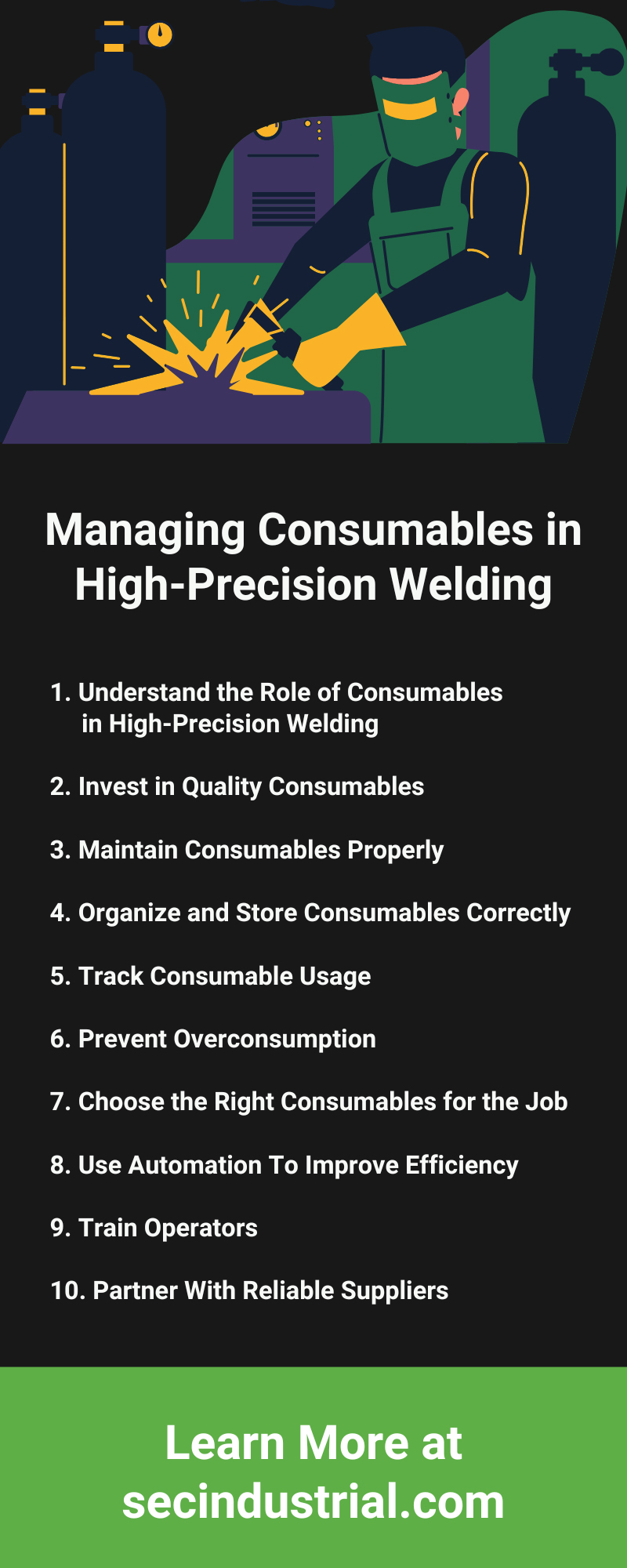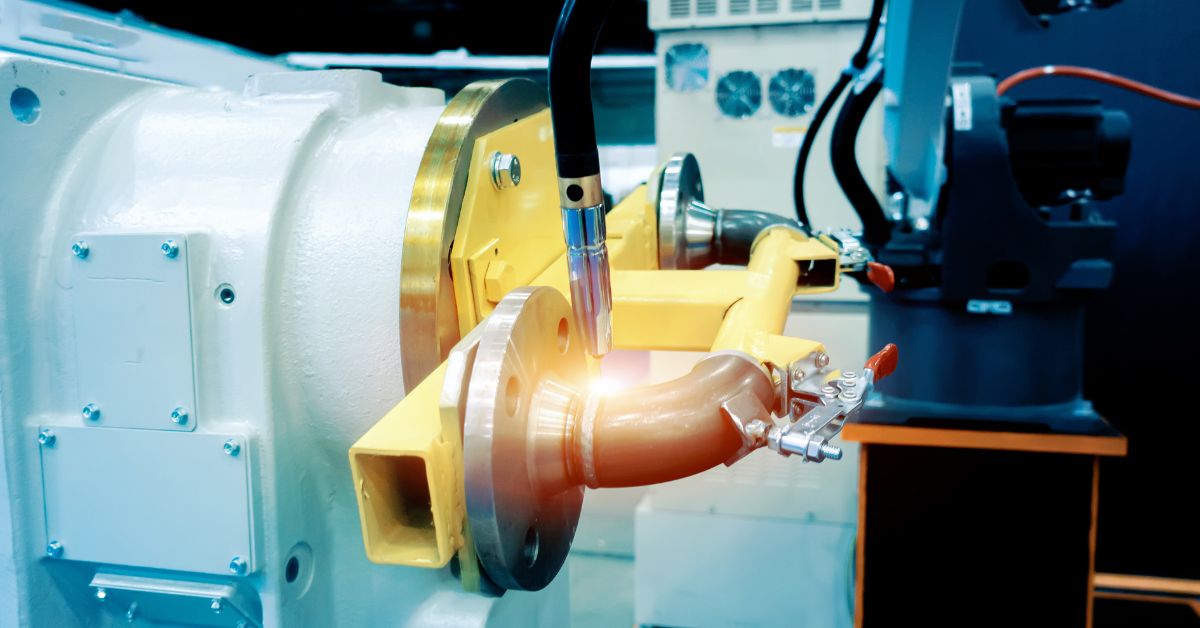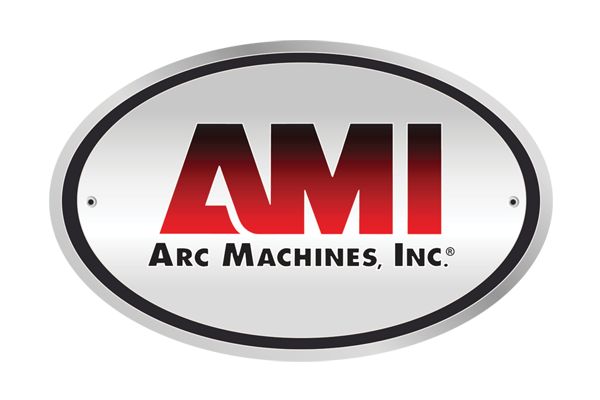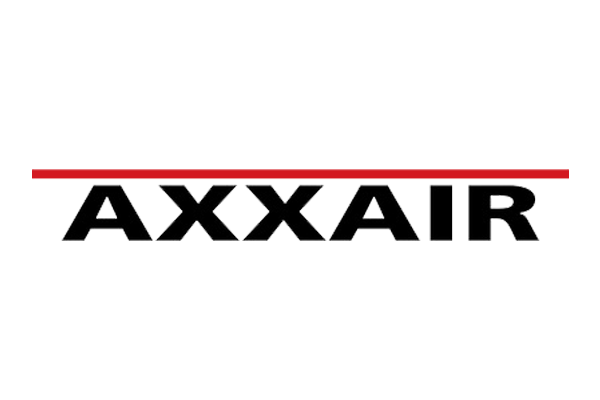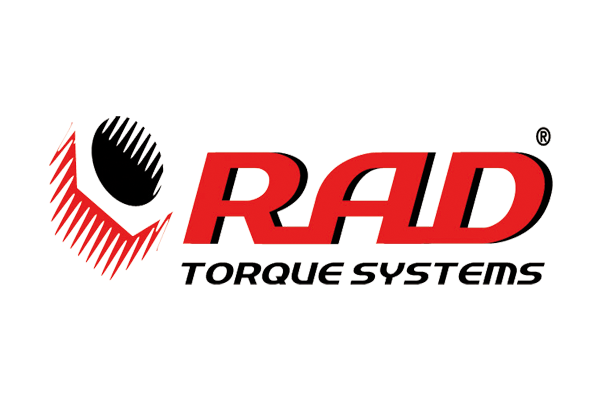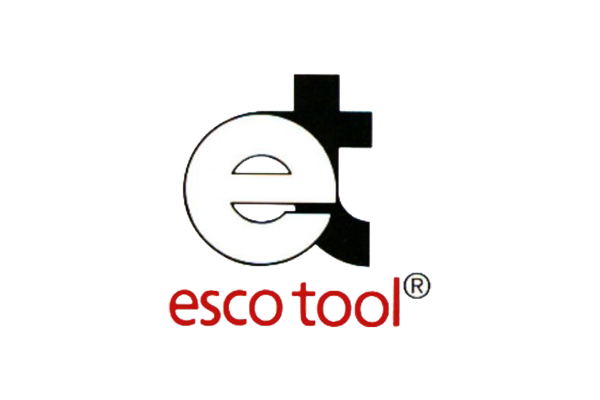Managing Consumables in High-Precision Welding
Precision welding requires expert skills and proper use of consumables. From electrodes to shielding gases, each component directly affects weld quality, efficiency, and operational costs. Properly managing consumables in high-precision welding can improve productivity across projects. Welders and contractors can improve their use of consumables by following these 10 practical tips.
1. Understand the Role of Consumables in High-Precision Welding
Consumables are the materials that make welding possible. These include electrodes, filler metals, nozzles, tips, and shielding gases. Each serves a purpose in the weld’s precision and longevity.
For example, using a worn-out contact tip can cause inconsistent wire feed, leading to uneven welds. Knowing what goes into every weld and why it matters is the first step in managing these essential materials effectively. The specific welding process, material type, and desired outcome influence the choice of consumables.
2. Invest in Quality Consumables
Not all consumables are adequate for every project. Cutting costs by choosing cheaper options may initially seem economical, but this can lead to poor weld quality. Higher rejection rates and frequent replacements may also come as a result.
Evaluate suppliers or manufacturers carefully, and select consumables known for reliability and longevity. While it’s tempting to prioritize cost, the long-term implications of using subpar materials can outweigh immediate savings.
High-quality consumables can also improve efficiency by preventing equipment malfunctions. They require less frequent maintenance, saving time and money in the long run. Additionally, reliable consumables support consistent weld performance, helping your projects meet industry standards.
3. Maintain Consumables Properly
Consumable maintenance is easy to overlook. Regularly inspect nozzles, diffusers, and liners for wear or damage. For example, spatter buildup inside a nozzle can reduce gas flow, leading to poor shielding and, ultimately, inferior weld quality. A basic cleaning routine using wire brushes or spatter-release products can extend consumable life significantly.
Replace damaged consumables immediately to avoid disruptions or defects during welding. Using high-quality consumables that match your equipment specifications can enhance performance.
4. Organize and Store Consumables Correctly
Consumables should always be stored in a clean environment to prevent contamination. Keep electrodes and filler metals in dry environments to avoid moisture absorption, which leads to rust and porosity in welds.
Similarly, ensure shielding gas cylinders are stored securely in an upright position away from high temperatures. Organized storage also allows quick access to what you need, reducing downtime during operations.
Store consumables in labeled containers to avoid mixing different types, which can lead to quality issues. Regularly inspect storage areas for leaks, humidity, or temperature fluctuations that could compromise material integrity. Most importantly, always follow manufacturer guidelines for storage conditions to maintain performance.
5. Track Consumable Usage
Monitoring consumable usage can highlight inefficiencies and improve management. By understanding how much material is consumed per project or task, you can identify patterns and optimize inventory. Implementing software solutions or manual tracking methods can support accurate records, especially when using automated welding equipment.
Regular tracking can also prevent shortages and keep critical materials in stock. Taking this step further by comparing usage data across similar projects can uncover valuable cost-saving opportunities. Additionally, training staff on proper techniques reduces waste and extends the life of consumables, creating a more efficient system.
6. Prevent Overconsumption
Overuse of consumables is a common issue in welding projects. Whether it’s excessive electrode consumption or unnecessary shielding gas flow, waste can quickly lead to increased costs. To avoid this, calibrate equipment accurately, follow proper welding techniques, and train operators to use materials responsibly.
Regularly monitor consumable usage to find patterns of overuse. Once you identify patterns, consider investing in high-quality consumables that last longer and reduce waste. Implement a tracking system to manage inventory and prevent unnecessary reordering to further streamline the process.
7. Choose the Right Consumables for the Job
Welding processes use different consumables. For example, welders choose the electrode type, such as solid wire or flux-cored wire, based on the material and the desired outcome. Mismatched consumables lead to substandard results, so always select components that meet the needs of high-precision welding.
Consider the material thickness and welding environment when selecting consumables. Using the wrong shielding gas or filler metal can compromise welding strength and appearance.
8. Use Automation To Improve Efficiency
Automated welding machines reduce human error, improve consumable use, and deliver consistent results. By integrating automation into your operations, you can gain more control over consumable performance and efficiency. Tools like these are especially beneficial in high-precision applications where accuracy is critical.
Automation also improves worker safety by minimizing exposure to hazardous environments. It allows for faster production cycles, helping meet tight deadlines without sacrificing quality. Additionally, automated systems can provide real-time data monitoring, enabling quick adjustments to enhance performance.
9. Train Operators
The best consumables in the world won’t perform well if operators use them incorrectly. Regular training teaches welders the proper techniques, equipment settings, and maintenance procedures that improve consumable longevity and weld quality. Empowering operators with knowledge can make a substantial difference in the success of high-precision welding projects.
Training should also cover safety protocols to reduce accidents. Hands-on practice with new tools and materials helps operators stay updated on the latest advancements in welding technology. Establishing a routine for refresher courses keeps skills sharp over time.
10. Partner With Reliable Suppliers
Our goal at SEC Industrial is to be more than your supplier. We provide high-quality products and offer support to help you get the most out of your consumables. By working with us, you’ll have a reliable partner who provides a steady supply and offers expert advice tailored to your needs. Let us help you stay ahead of potential issues and keep things running smoothly.
Take Control of Your Consumables
Managing consumables in high-precision welding doesn’t have to make a drastic change in your operations. By focusing on quality, proper storage, and operator training, you can achieve better efficiency and higher-quality results. Whether you’re using an automated welding machine or conducting manual operations, implementing these strategies will reduce costs and enhance your welds.
Optimize your consumables today to see improvements in every project. A little effort in management can make a big difference in precision and performance.
